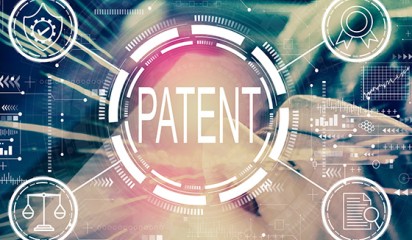Australian patent law regarding computer-related inventions remains unchanged
On Friday 13 September 2019, a panel of five judges in the Full Federal Court of Australia dismissed the appeal of Encompass Corporation Pty Ltd v InfoTrack Pty Ltd [2019] FCAFC 161 (Encompass appeal). This case has been of interest to the ICT industry due to the confusion around how to apply the manner of manufacture test to computer-related inventions.
Summary of Encompass Corporation Pty Ltd v InfoTrack Pty Ltd [2018] FCA 421 (Encompass 2018)
Encompass Corporation Pty Ltd, the patentee of two innovation patents, sued InfoTrack Pty Ltd for infringement of certain claims of the patents. The primary judge found that neither patent claimed a patentable invention. The invention claimed in each patent did not satisfy the manner of manufacture test.
Summary of Encompass appeal
In the appeal, the Court saw no error in the primary judge’s conclusion. The panel of judges commented on the patentability of inventions involving both generic computer technology and an otherwise unpatentable scheme or plan. In such cases, there needs to be something more, for example, implementation of an idea in a computer that creates an improvement in the computer.
Manner of manufacture
The Australian Patents Act 1990 states that an invention is patentable if it is a manner of manufacture, is novel, involves an inventive step, and is useful. Manner of manufacture assesses whether the invention relates to patent-eligible subject matter, whereas novelty and inventive step compare the invention to the prior art.
Australian courts have clarified that these four requirements are distinct requirements of a patentable invention. For example, assessment of manner of manufacture should not involve an assessment of novelty nor inventive step.
IP Australia has developed a special approach to the assessment of manner of manufacture for computer-related inventions. Australian patent examiners apply an adaptation of the four-step test formulated in the United Kingdom in Aerotel Ltd v Telco Holdings Ltd & Ors Rev 1 [2007] RPC 7 (Aerotel).
The four steps set out in Aerotel are:
- correctly construe the claim
- identify the actual contribution
- ask whether it falls solely within the excluded subject matter
- check whether the actual or alleged contribution is technical in nature.
Manner of manufacture should be assessed separately to novelty and inventive step. However, step 2 makes this a little hard. When identifying a ‘contribution’, the first question that arises is, of course ‘a contribution over what?’
When identifying the contribution, IP Australia doesn’t see any difficulty with looking to common general knowledge or the prior art base. Mere schemes and plans fall within the subject matter that is generally excluded. Where an alleged invention involves generic computer technology carrying out a mere scheme or plan, patent examiners will look for inventiveness or ingenuity in the computer implementation.
Of course, the focus on the computer implementation will only arise where an alleged invention involves both generic computer technology and an otherwise unpatentable scheme or plan. Where an invention involves novel computer technology or an otherwise patentable method, it does not matter if the invention is merely implemented on a computer.
Improvement to a computer
In Encompass 2018, a single judge in the Full Federal Court of Australia considered the patentability of a couple of computer-related inventions.
The patentee obtained two innovation patents for inventions related to federated search mechanisms. These are mechanisms that can search across multiple databases and aggregate the results.
In National Research Development Corporation v Commissioner of Patents [1959] HCA 67; 102 CLR 252 (NRDC), the High Court gave some guidance around determining whether a claimed invention is a manner of manufacture. The question is whether the invention is proper subject matter according to the principles developed for the application of section 6 of the Statute of Monopolies.
Taking into account the principles of NRDC and other cases, the primary judge found that the alleged invention brought about an artificially created state of affairs which has economic significance.
However, this wasn’t enough. The primary judge was looking for an ‘improvement’ in the sense of a computer performing some activity which it was not possible to perform prior to the method. The primary judge found that the invention was a concatenation of three known methods. Therefore, none of these three elements individually, or in combination, brought about an improvement in the functionality of the computer.
The patentee appealed, pleading alleged errors the primary judge made in coming to his conclusion that the claims did not define a manner of manufacture. One of the alleged errors was that the primary judge’s reference to the concatenation of three known methods impermissibly incorporated the concept of inventive step into his consideration of whether the method was a manner of manufacture.
Dismissal of the appeal
In the Encompass appeal, an expanded panel of five judges dismissed the appeal. The Court saw no error in the primary judge’s conclusion that no manner of manufacture is involved in the method and apparatus as claimed.
The Court noted that, for most inventions, a finding of an ‘artificially created state of affairs of economic significance’ will be sufficient to satisfy the manner of manufacture requirement.
In some cases, there will be countervailing considerations, for example, where an alleged invention involves generic computer technology carrying out an abstract idea or scheme. In such cases, something more is required. This ‘something more’ is the difference between the mere implementation of an abstract idea in a computer and implementation of an idea in a computer that creates an improvement in the computer.
The Court accepted the respondent’s submission that the method claims, in this case, are no more than an instruction to apply an abstract idea using generic computer technology. The steps of the method represent no more than an abstract idea.
The claims define nothing more than a method in which an uncharacterised electronic processing device (a computer) is employed as an intermediary to carry out the method steps – where the method itself is claimed in terms which amount to no more than an abstract idea or scheme.
Further steps
The Court concerned itself solely with whether or not the primary judge correctly applied the existing case law. It was observed that this appeal did not provide an opportunity for the Court to set out the metes and bounds of patentable computer-implemented inventions, assuming that be an appropriate task.
The extent to which consideration of manner of manufacture should involve an assessment of novelty or inventive step is, therefore, a question for another day. The Court neither criticised nor endorsed the approach of IP Australia of looking to common general knowledge or the prior art base when identifying the contribution of an alleged invention.
The appellants have 28 days from the judgment to file an application for special leave to appeal to the High Court. If this issue is brought to the High Court, we may have a better understanding of whether looking to common general knowledge or the prior art base to identify the contribution of an invention is appropriate.











